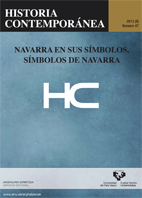The Pupil of Santiago's Institute in the Last Decade of the xixth Century: Sociocultural Context and Academic Yield
##plugins.themes.bootstrap3.article.main##
##plugins.themes.bootstrap3.article.sidebar##
Abstract
The objectives and contents of any education come in great measure determined by the necessities and characteristic of their addressees. From there comes the importance of analyzing these characteristics, beginning with the most visible aspects as previous step for ulterior studies. For it, the present work approaches the characteristics of the students of secondary education in the last decade of the 19th century, through a concrete example. With a mainly quantitative focus, there are aspects like geographical origin, social extraction, ages when beginning and finishing the studies, duration of them, or academic yield. The results, among others, show us an outstanding weight of the urban means, with a majority presence of the nearest environment, but without the lack of those coming from away places, as well as a prevalence of the high classes, tinged by the presence, although limited, of the other groups, including the most popular layers in the society.
##plugins.themes.bootstrap3.article.details##
Santiago, high school, institute, students
Authors publishing in the journal Historia Contemporánea agree to the following terms:
- Authors retain full copyright of their papers, but also grant copyright to the academic publisher (UPV/EHU Press) for the purposes of copyright management, vigilance and protection.
- Papers are by default published with a non-restrictive Creative Commons CC-BY-NC-ND 4.0. You are free to: Share, copy and redistribute the material in any medium or format. The licensor cannot revoke these freedoms as long as you follow the license terms. Under the following terms:
Attribution — You must give appropriate credit, provide a link to the license, and indicate if changes were made. You may do so in any reasonable manner, but not in any way that suggests the licensor endorses you or your use.
NonCommercial — You may not use the material for commercial purposes.
NoDerivatives — If you remix, transform, or build upon the material, you may not distribute the modified material.
No additional restrictions — You may not apply legal terms or technological measures that legally restrict others from doing anything the license permits.
- If an author requires a more restricted CC license (e.g. CC-BY-SA), this can be provided by contacting our publisher at: publications@ehu.eus
- In particular, and without having to request additional permission, CC BY-NC-ND licensed papers can be deposited in institutional repositories and academic web sites.
- Postprints (i.e. accepted but non-edited versions of the manuscript) can also be pre-published online, providing acknowledgement of authorship and source is specified as above.
For non-standard uses of papers or materials published in Historia Contemporánea, please contact our publisher UPV/EHU Press at: publications@ehu.eus

